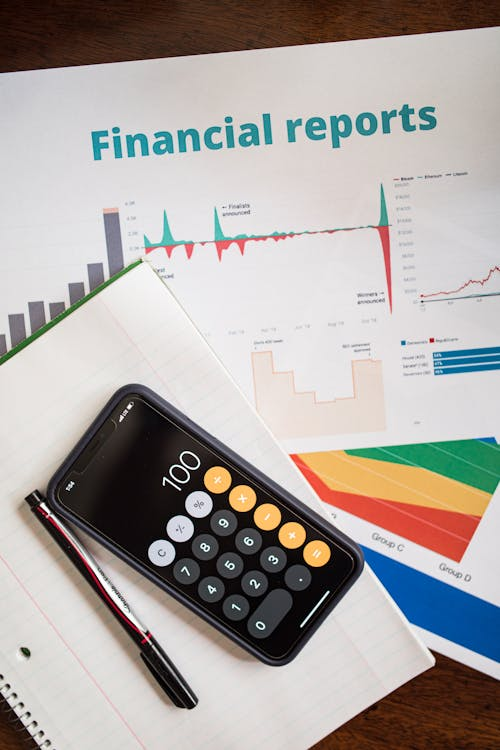





| # | Source | Pair | Volume | Price | Change | Updated |
|---|

| Date | Open | Close | High | Low | Volume |
|---|

Arbitrum is an Ethereum layer-two (L2) scaling solution that uses a technology called optimistic rollups to enhance Ethereum’s scalability, speed, and cost-efficiency. It offloads most computation and storage off-chain, helping Ethereum process more transactions at a fraction of the cost.
Arbitrum’s integration with Ethereum ensures compatibility with existing Ethereum-based applications while significantly reducing transaction fees and increasing throughput.
The platform is powered by its native token ARB, which is also used for governance in the Arbitrum Decentralized Autonomous Organization (DAO). This structure allows ARB token holders to vote on key protocol decisions, including upgrades and fund allocation.
Arbitrum operates by leveraging optimistic rollups:
Transaction Processing Off-Chain: Most transaction execution happens off-chain, significantly reducing the burden on the Ethereum mainnet.
Assumption of Validity: Transactions are assumed to be valid unless challenged. If a discrepancy is suspected, a fraud proof can be submitted to dispute it.
Batched Transactions: Arbitrum batches numerous transactions into a single rollup block and submits them to Ethereum for finalization and security.
This system improves both scalability and efficiency, making it ideal for high-volume decentralized applications and reducing Ethereum gas fees.
Arbitrum offers several key advantages over using Ethereum directly:
High Scalability and Speed: It processes thousands of transactions per second (TPS), far surpassing Ethereum’s base network.
Reduced Gas Fees: Transaction costs on Arbitrum are significantly lower than Ethereum’s mainnet, making it a cost-effective solution for users and developers.
Ethereum Security: It inherits Ethereum’s security model, ensuring data integrity while processing transactions off-chain.
Ecosystem Compatibility: Arbitrum supports Ethereum’s existing dApps, meaning Ethereum-based projects can transition to Arbitrum with minimal code changes.
Future Innovations: With updates like Stylus, Arbitrum supports programming in languages beyond Solidity, such as Rust and C++, creating more flexibility for developers.
ARB is the native token of the Arbitrum ecosystem. It serves several important functions:
Governance: ARB holders vote on key decisions, such as protocol upgrades, fee adjustments, and funding allocations within the Arbitrum DAO.
Security: Validators stake ARB to secure the network. Validators earn rewards and are penalized for dishonest behavior.
Incentives: ARB is also used to incentivize users, validators, and dApps to participate in the ecosystem.
Transaction Fees: While Ethereum’s mainnet fees can be prohibitive, ARB helps reduce the cost of transacting within Arbitrum’s ecosystem.
Offchain Labs, the team behind Arbitrum, has transitioned the project to a decentralized autonomous organization (DAO) structure, meaning that ARB token holders collectively steer the future of the network.
Arbitrum’s token launch was highly anticipated. On March 16, 2023, the team announced an airdrop that distributed ARB tokens to early users and DAOs building on Arbitrum. The airdrop was based on a point system evaluating users’ interactions with the network until a cutoff date of March 1, 2023. The official token generation event (TGE) then took place on March 23, 2023, marking the beginning of ARB’s broader circulation.
Optimistic Rollups: This method assumes transactions are valid, reducing verification overhead while still allowing challenges via fraud proofs.
Full EVM Compatibility: Arbitrum supports unmodified Ethereum Virtual Machine (EVM) contracts, so any Ethereum dApp can run on Arbitrum without altering its code.
High Throughput and Low Fees: It handles thousands of transactions per second with substantially reduced fees compared to Ethereum’s mainnet.
Decentralized Validator Network: Rather than relying on a centralized operator, Arbitrum uses a decentralized network of validators who stake ARB tokens to secure the system.
Scalability: Arbitrum can handle significantly more transactions than Ethereum’s base layer, supporting decentralized applications with heavy transaction demands.
Developer Flexibility: Upcoming features like Stylus will allow developers to deploy programs in languages such as Rust and C++, broadening the range of applications that can run on Arbitrum.
Arbitrum’s security is built on multiple layers:
Ethereum’s Consensus: By posting transaction data to Ethereum, Arbitrum inherits Ethereum’s security and finality.
Optimistic Rollup Mechanism: This off-chain processing method includes a built-in dispute period during which fraud proofs can be submitted if transactions are found to be invalid.
Decentralized Validators: Validators stake ARB tokens to participate in the network and are economically incentivized to act honestly, ensuring that the system remains secure and censorship-resistant.
Together, these measures create a robust security framework that safeguards user funds and maintains network integrity.
Transactions on Arbitrum are processed off-chain in batches using optimistic rollups. The process includes:
Batching: Multiple transactions are grouped together, reducing the frequency of interactions with Ethereum’s mainnet.
Off-Chain Execution: Transactions are executed off-chain, significantly cutting down on gas fees.
On-Chain Commitment: A summary of batched transactions is periodically sent to Ethereum for validation and finality.
Dispute Resolution: A challenge window allows any participant to contest a transaction by submitting a fraud proof, ensuring that all transactions remain valid.
This system ensures rapid processing, lower fees, and secure, trust-minimized operations.
Ethereum remains the foundational layer for Arbitrum. While Arbitrum processes the bulk of transactions off-chain to improve speed and reduce costs, it periodically commits data to Ethereum. This relationship ensures that Arbitrum benefits from Ethereum’s proven security, decentralization, and finality. In essence, Ethereum acts as the ultimate arbiter of transaction validity, anchoring Arbitrum’s off-chain computations to a secure on-chain base.
The Stylus upgrade introduced in 2025 allows developers to write Arbitrum dApps in multiple programming languages beyond Solidity, such as Rust and C++. This change broadens the developer base and opens up new possibilities for building highly performant decentralized applications. Stylus enhances Arbitrum’s flexibility, allowing developers to optimize their applications for better scalability and performance.
Optimistic rollups are a scaling technique that allows Arbitrum to execute transactions off-chain while assuming that they are valid by default. Their importance lies in the following aspects:
Efficiency: By avoiding immediate on-chain verification for every transaction, the network saves significant computational resources and reduces gas fees.
Security: Although transactions are presumed valid, a fraud-proof mechanism and dispute period allow challenges to be raised if any transaction is suspected to be invalid.
Scalability: This model enables Arbitrum to process thousands of transactions per second, greatly enhancing network throughput without sacrificing the security benefits of Ethereum.
Optimistic rollups thus strike a balance between performance and security, making them a cornerstone of Arbitrum’s technology.
Yes, you can stake ARB tokens to secure the network. By staking your tokens, you become part of the validator or participant network, helping to process and validate transactions. Validators who stake ARB tokens are rewarded with additional ARB tokens for helping to secure the network. There may also be opportunities for delegated staking, allowing non-validators to stake their tokens with a validator and earn rewards.
Arbitrum achieves fast transaction finality by posting rollup blocks to the Ethereum mainnet. Although it uses optimistic rollups, which initially assume transactions are valid, any invalid transactions can be contested through fraud proofs. Once the transactions are submitted to Ethereum for finality, they are quickly confirmed, enabling faster confirmations than Ethereum’s base layer. This approach combines speed with the security of Ethereum’s decentralized network.
Yes, Arbitrum is considered safe to use. It operates on Ethereum’s base layer, which is one of the most secure and decentralized blockchain networks. Arbitrum’s fraud-proof system and staking mechanism ensure that only valid transactions are processed. Additionally, the network has been extensively tested and audited by reputable security firms to ensure there are no vulnerabilities. However, users should always remain cautious and follow security best practices, such as using hardware wallets and keeping private keys safe.
Yes, you can transfer tokens between Ethereum and Arbitrum. Arbitrum offers a bridge to move assets seamlessly between the two networks. Users can deposit their tokens into the Arbitrum network using the Arbitrum Bridge, where they can benefit from lower gas fees and faster transactions. Similarly, tokens can be withdrawn from Arbitrum back to Ethereum. The bridge is secure and designed to ensure that assets are only moved with valid transaction proofs.
To set up Arbitrum on your wallet, follow these steps:
Install a Supported Wallet: Install a wallet like MetaMask or Trust Wallet that supports Ethereum and Layer-2 networks.
Connect to Arbitrum Network: Add the Arbitrum network to your wallet by selecting the Arbitrum Network in the network dropdown within MetaMask. You can also manually input Arbitrum’s network settings.
Deposit Funds: Transfer Ethereum (ETH) to your wallet, then use the Arbitrum Bridge to deposit it onto the Arbitrum network.
Start Using Arbitrum: After your funds are deposited, you can interact with dApps on Arbitrum and benefit from low fees and fast transaction speeds.
Arbitrum’s main use cases revolve around improving Ethereum’s scalability while maintaining its security. Some of the most prominent use cases include:
Decentralized Finance (DeFi): Arbitrum provides a fast, low-cost platform for DeFi protocols, including Uniswap, Aave, and GMX, which benefit from its increased throughput and reduced gas fees.
NFTs: Arbitrum offers a cost-effective platform for minting, buying, and selling NFTs, enabling a more seamless user experience compared to Ethereum’s mainnet.
Gaming and Metaverse: With low fees and fast transaction speeds, Arbitrum is ideal for gaming projects, particularly play-to-earn games and virtual worlds.
Enterprise Solutions: Arbitrum is increasingly being used by enterprises to deploy smart contracts and build private networks with the scalability Ethereum can’t yet offer.
Cross-chain Bridges: The network supports interoperability, enabling users to move assets between Ethereum and Arbitrum with minimal friction.
There are several ways you can earn rewards with ARB tokens:
Staking ARB: By staking ARB tokens as part of Arbitrum’s decentralized governance system, you can earn rewards for securing the network and participating in protocol decisions.
Liquidity Mining: Certain protocols on Arbitrum offer liquidity mining rewards, where users can earn ARB tokens by providing liquidity to DeFi platforms.
Governance Participation: Active participation in governance decisions and voting may also reward ARB token holders in the future, depending on proposals and network developments.
Yes, Arbitrum is compatible with several popular cryptocurrency wallets. These wallets support Ethereum-based assets, and since Arbitrum is fully compatible with Ethereum, you can use the same wallet to interact with the Arbitrum network.
MetaMask: This is one of the most widely used wallets for Arbitrum. You can easily add the Arbitrum network to MetaMask and interact with dApps on Arbitrum.
Trust Wallet: Another popular option for accessing Arbitrum-based dApps and managing ARB tokens.
Coinbase Wallet: Also supports the Arbitrum network, allowing users to manage assets and access decentralized applications.
Once you add Arbitrum to your wallet, you can interact with the network just like you would with Ethereum, but with lower fees and faster transactions.
Holding ARB tokens offers several benefits, especially for those interested in the governance and growth of Arbitrum:
Governance Participation: ARB holders can participate in network governance by voting on proposals that affect protocol upgrades, fee structure, and other essential decisions.
Staking Rewards: By staking ARB tokens, you can earn rewards for securing the network, contributing to its decentralization.
Incentives and Airdrops: ARB token holders are often eligible for participation in future airdrops or incentive programs, which may provide additional tokens or rewards.
Protocol Upgrades: As the protocol evolves, ARB token holders will be able to vote on new features, changes to the network, and how funds should be allocated to maintain and grow the ecosystem.
Arbitrum offers a variety of educational resources for both beginners and advanced developers:
Documentation and Developer Guides: Comprehensive guides are available on the official Arbitrum website (https://arbitrum.io/), covering topics from basic network setup to advanced smart contract development using Stylus.
Tutorials and Webinars: Regular webinars, video tutorials, and online courses are offered by the Arbitrum community and partnered organizations.
Community Forums and Discord Channels: These platforms provide spaces to ask questions, share knowledge, and get real-time support from experienced developers and network experts.
Hackathons and Workshops: Arbitrum frequently hosts hackathons and coding workshops that are excellent for hands-on learning and networking with industry professionals.
Interoperability is a key focus for Arbitrum. The network is designed to be compatible with Ethereum, and ongoing efforts are in place to enhance cross-chain communication. Some of the measures include:
Cross-Chain Bridges: Secure bridges allow assets to move seamlessly between Ethereum, Arbitrum, and other blockchains.
Interoperable Protocol Standards: Arbitrum supports standard Ethereum protocols (ERC-20, ERC-721, etc.), making it easier to integrate with other blockchain projects.
Collaboration with Other L2 Solutions: Partnerships with other Layer-2 networks and cross-chain platforms are being established to create a more interconnected ecosystem.
These initiatives help ensure that Arbitrum can serve as a bridge between different blockchain ecosystems, facilitating broader adoption and use cases.
Seamlessly connect with Kenson Investments for specialized assistance on your digital asset journey.


Kenson Investments excels in digital asset management, serving high-net-worth individuals and businesses. We prioritize security and transparency, offering tailored solutions for asset management, diversification, and innovative investment opportunities in the expanding digital asset sector.
Disclaimer: The crypto currency and digital asset space is an emerging asset class that has not yet been regulated by the SEC and US Federal Government. None of the information provided by Kenson LLC should be considered as financial investment advice. Please consultant your Registered Financial Advisor for guidance. Kenson LLC does not offer any products regulated by the SEC including, equities, registered securities, ETFs, stocks, bonds, or equivalents.

Copyright © 2024 Kenson Investments. All Rights Reserved.